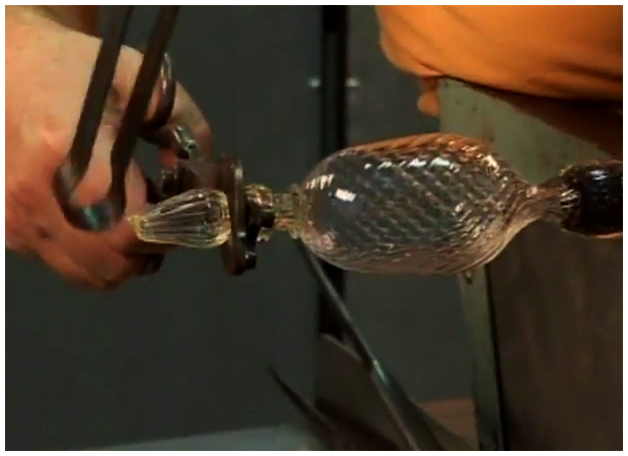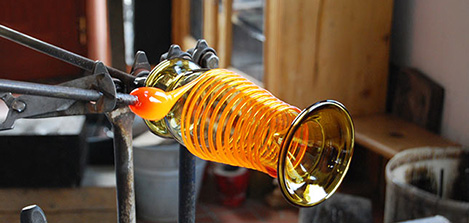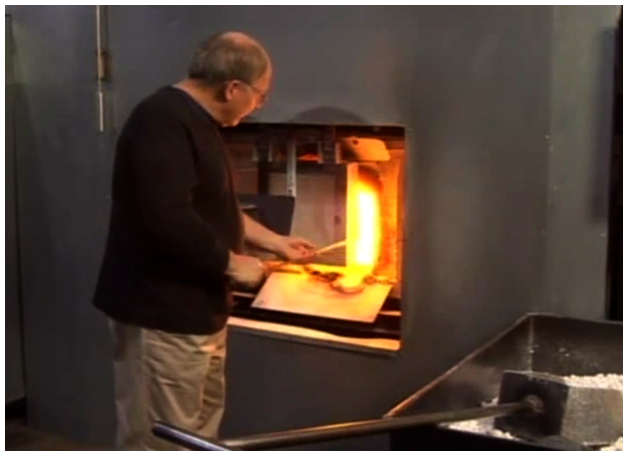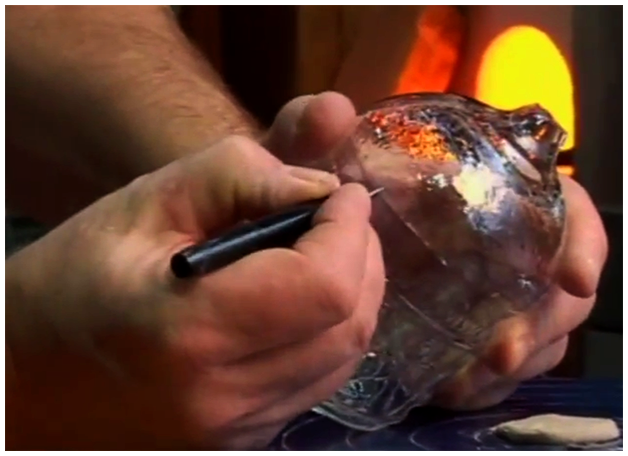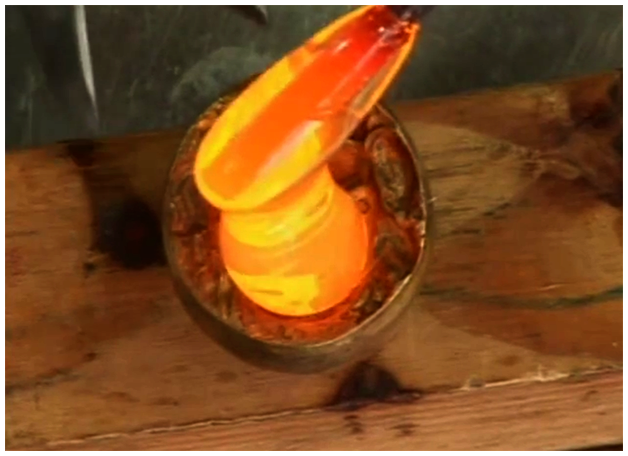Free-blown glass is formed without the use of molds. The glassblower inflates the glass on the blowpipe and manipulates it with tools to make the desired form, such as a bowl, pitcher, or drinking glass. In a traditional glasshouse setting, the head glassblower of each team or “shop” is called the gaffer. To make
